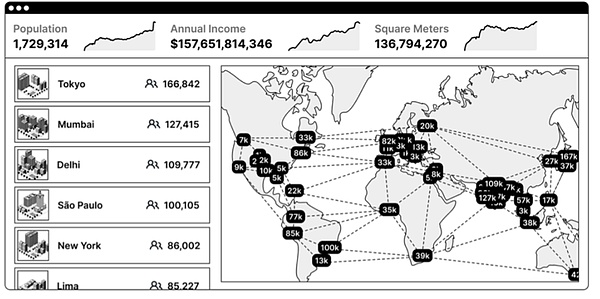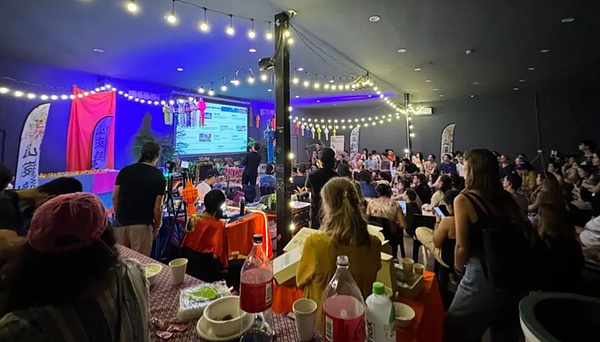Foreword
We are witnessing an extraordinary transformation in the world of human collaboration. While the world’s eyes remain on traditional tech hubs, a new model is emerging that could fundamentally change how we build the future together. That model is the “pop-up city” – communities that are transient but purposeful. These cities prove that innovation is not limited to location, but is catalyzed by the right people coming together at the right time in the right environment.

1. Beyond the Traditional Model: The Next Step in Evolution
Understanding how pop-up cities go beyond existing innovation models is the first step toward this concept. As Vitalik puts it in “Why I Founded Zuzalu”:
“We already have hacker houses, places that can exist for months or even years, but usually only hold ten or twenty people. We already have large conferences, events that can hold thousands of people, but each conference only lasts a week. That’s enough for people to meet up, but not enough for deep connections.”
Pop-up cities represent a leap forward—“a step in both directions at once,” creating spaces that can hold hundreds of people for months. This is not just an expanded hacker house or an extended conference event. Vitalik describes it as a “sweet spot”—ambitious and unique enough to provide new insights, but lightweight enough to be easy to manage logistically.
Having been deeply involved in the crypto ecosystem over the past few years, I have experienced firsthand the unique challenges and opportunities of the industry’s remote culture. As a venture capitalist, I’ve watched countless teams build revolutionary technologies in decentralized locations across time zones and continents around the world. This distributed approach brings unprecedented freedom, but it also comes with a hidden price—what I’ve come to realize is the lack of the “magic” of real human connection.
I remember my first crypto conference vividly. After months of Zoom meetings and Telegram chats, it was exhilarating to suddenly see the real faces behind those familiar usernames. They weren’t just attendees at meetings—they were developers whose code I reviewed, founders whose projects I invested in, and thought leaders whose ideas I followed. In those hallway conversations and impromptu whiteboard discussions, ideas that had been brewing in isolated digital spaces suddenly took on new life through face-to-face collaboration.

2. The First Experiment: From the Network State to Zuzalu
2.1 The Vision of the Network State
The theoretical basis of these communities comes from Balaji Srinivasan’s revolutionary idea of a “network state” - a vision that digital communities unified by shared values can be translated into real space. This suggests a profound future: the way humans organize may no longer be constrained by arbitrary geographical boundaries, but shaped by shared goals and visions.

Source: Balaji Srinivasan’s Cyber Nation Vision
What makes the crypto community an ideal pioneer for this new model? Unlike the traditional tech industry, which tends to be concentrated in a single center, the crypto field has always embodied a different spirit. Ethereum’s development team is spread all over the world, from Switzerland to Singapore, from Berlin to Romania. This natural resistance to centralization, combined with years of rich experience in global coordination, has laid the perfect foundation for this new thing.
2.2 Zuzalu: From theory to reality
In early 2023, this vision became a reality in Montenegro with a playful name of "Zuzalu" that has no specific meaning. Within two months, Lustica Bay became home to 200 residents - a carefully selected group of Ethereum developers, longevity researchers, and governance experts. This is not just a gathering, but a living laboratory where new ideas can be tested, improved, and implemented in real time.

Source: Peter Young - Montenegro Lustica Bay
The impact is direct and significant. For example, Zupass - a prototype of an identity system originally developed by the 0xPARC team. Through constant interaction with users and rapid iteration, a tool that might have taken months to develop in a traditional environment has evolved into a practical tool in a few weeks and is now widely used in multiple flash communities.

3. Sinking Vision: From Zuzalu to Chiang Mai
3.1 Open Borders
Then, the movement evolved further in a decentralized way unique to the crypto field. In December 2023, Vitalik proposed "reopening the frontier" and supported this vision through two rounds of Gitcoin funding totaling 500 ETH. Its core goal is very clear: remove any central authority and empower anyone who agrees with this mission to create their own "Zu Village".

This new approach explicitly abandons:
instead, it actively encourages existing community members and newcomers to host their own pop-up cities, even if they are held at the same time and close to each other.
3.2 Chiang Mai: The Realization of the Vision
In October 2024, Chiang Mai, Thailand saw multiple pop-up cities emerge simultaneously, creating an unprecedented ecosystem of connected communities. Notably,
many of these projects can be traced back to the original Zuzalu experiment: Edge City Lanna, ShanhaiWoo, The Mu, MEGAZu, HER DAO, Invisible Garden, Lovepunks, Funding the Commons, and other emerging communities. Each community brings a unique perspective while retaining the unique collaborative atmosphere in the Zuzalu spirit.


As a VC at IOSG Ventures, we are honored to sponsor The Mu, and I have had the opportunity to witness this vibrant ecosystem firsthand. The Social Layer platform has become our shared digital "downtown", showcasing the incredible range of activities across all communities. Every day, there are activities ranging from tech demo days where builders showcase their latest projects, to rock climbing classes, Muay Thai training, meditation workshops, leisure trips to explore Thai cultural sites, to community dinners and social gatherings.
What makes this experiment truly special is that each community actively encourages cross-border collaboration. Everyone is welcome to participate in the activities of each community - it is not only allowed, but also
celebrated. Weekly Zuzalu community meetings become a core event, where representatives from each pop-up city share updates and community members can connect across projects and interests. These moments of convergence show how, when traditional time and space constraints are removed, ideas can flow freely, relationships can deepen, and innovation can be accelerated in ways that traditional methods cannot.

4. The New Silicon Valley Model
What is special about pop-up cities is that they redefine the nature of innovation centers. Traditional tech hubs like Silicon Valley have succeeded by concentrating talent in one place, but their limitations are becoming increasingly apparent: a prohibitively high cost of living excludes diverse perspectives, visa restrictions keep global talent out, and even more damaging, an increasingly homogenous culture can stifle true innovation.
Pop-up cities offer a completely different alternative. They recreate the density of talent and interaction that Silicon Valley relies on, but for the global digital age.
In pop-up cities, developers can experiment with collaboration models through short-term projects before formally collaborating, teams can test compatibility, and ideas can be validated by a diverse global community in real time.
This contrast was particularly stark when I attended both Devcon and The Mu. While Devcon was full of energy and possibility, its short time span meant that many potential connections may never actually develop. You might have a great conversation about zero-knowledge proofs with someone in a coffee shop, exchange contact details, and promise to connect later — but that momentum often dissipates once everyone returns to their respective time zones.
Pop-up cities solve this problem by providing “relationship infrastructure” — the duration and shared context required for true collaboration. They find a middle ground between the fleeting interactions of a conference and the long-term commitment of a traditional tech hub. This is exactly the missing puzzle piece in our industry’s remote-first model: enabling spontaneous, unstructured collaboration that leads to breakthrough innovation.
As part of IOSG Ventures, we support this vision because we see radical potential for the future of innovation in pop-up cities. The success of multiple simultaneous communities in Chiang Mai shows that this model is transformative — it combines the best features of Silicon Valley’s innovation density with the global, dynamic nature of the crypto ecosystem.

5.The Promise of the Future
At a panel in Chiang Mai titled “The Promise of Pop-up Cities,” Vitalik painted a fascinating vision of the future: specialized communities will emerge to address specific challenges, from biotech hubs to self-sufficient infrastructure experiments. This specialization, coupled with the global flexibility of pop-up cities, reveals their far-reaching significance.
Looking back at the various crypto conferences, hacker houses, and now pop-up cities I’ve participated in, I feel deeply that this movement is not just an evolution of how we work, but also a shift in how we build communities in an increasingly digital world. The remote-first nature of the crypto industry has brought us unprecedented freedom, but it has also made us realize the irreplaceable value of face-to-face connections. Pop-up cities solve more than just productivity or innovation problems — they address a deeper sense of belonging and purpose in our globally distributed industry.
Perhaps the future won’t be in one “Silicon Valley,” but in a series of on-demand, purpose-driven communities that can pop up wherever and whenever the need for innovation arises. In fact, such iterations are already beginning to take shape — like ZuThailand, which will be held in Pattaya from November to December 2024, and which we at IOSG Ventures are proud to support. These communities will be more than just temporary gatherings — as Janine from Edge City puts it, they are “social incubators” where we can test and develop new models of education, healthcare, and human development.
Looking forward, I believe we’ve only just scratched the surface of what’s possible. Each new pop-up city teaches us valuable lessons about community building, governance, and collaboration. Through these experiments, we’re witnessing the early stages of what may be the most significant transformation in human collaboration since the Industrial Revolution. The potential is clear: pop-up cities are not only changing where innovation happens — they’re fundamentally reshaping how we build the future together.
 Kikyo
Kikyo
 Kikyo
Kikyo Weatherly
Weatherly Catherine
Catherine Weatherly
Weatherly Joy
Joy Catherine
Catherine Kikyo
Kikyo Joy
Joy Catherine
Catherine Anais
Anais